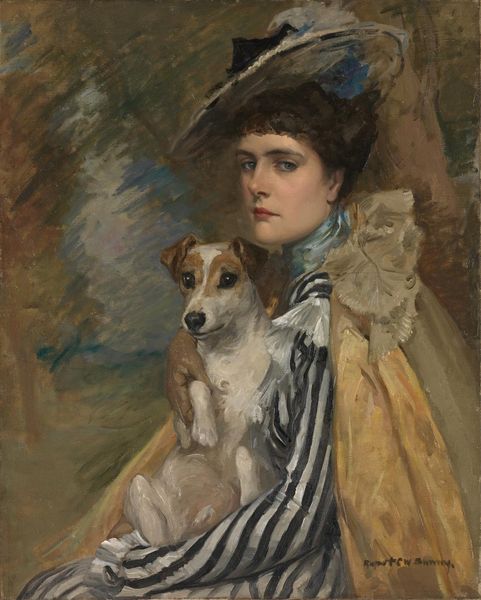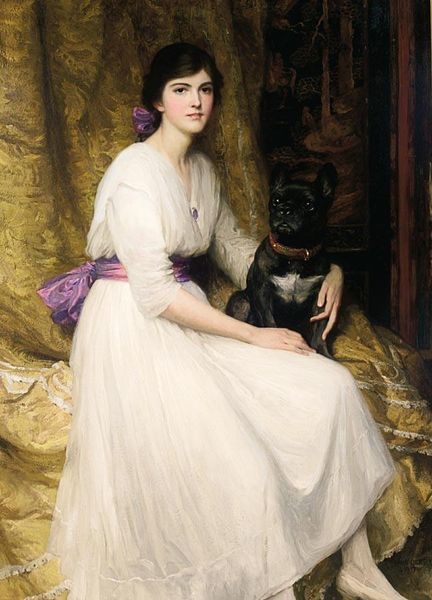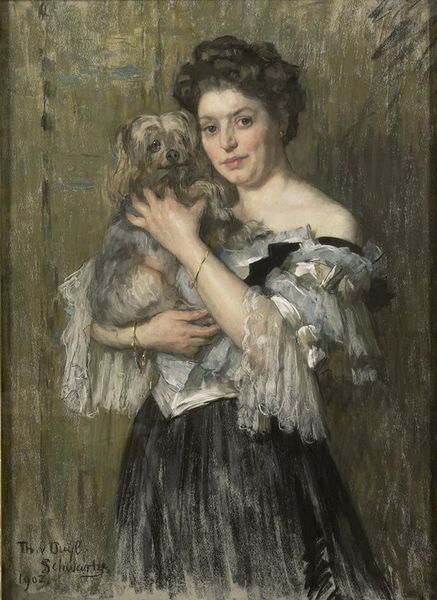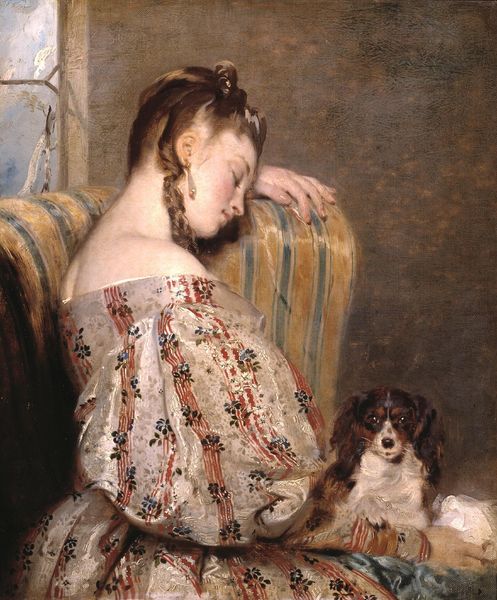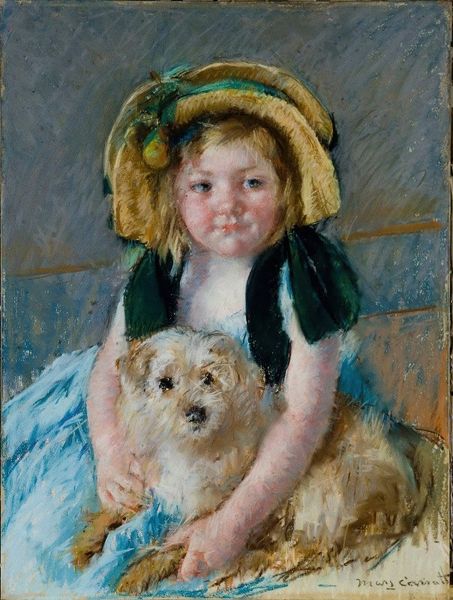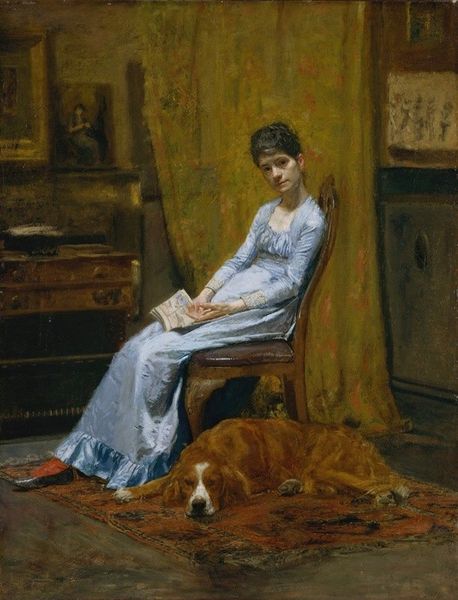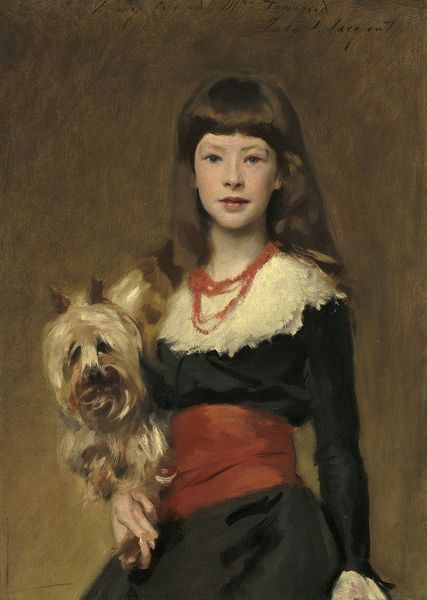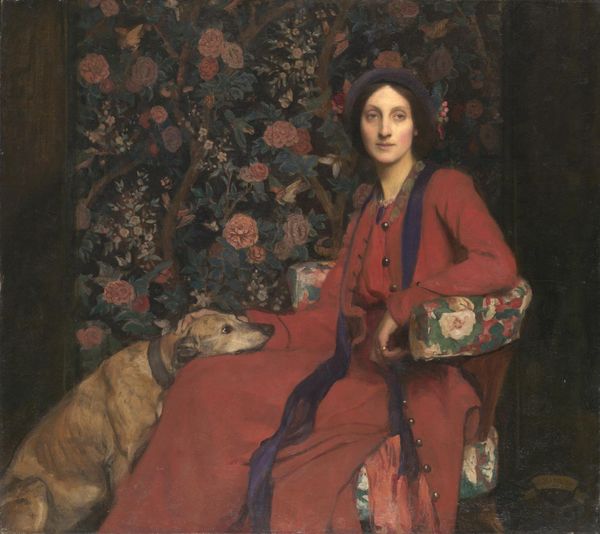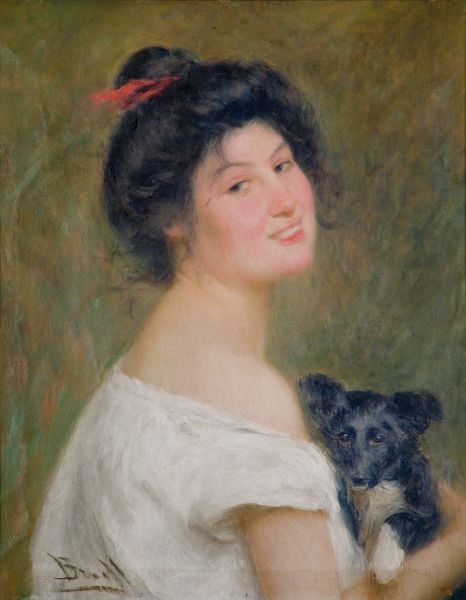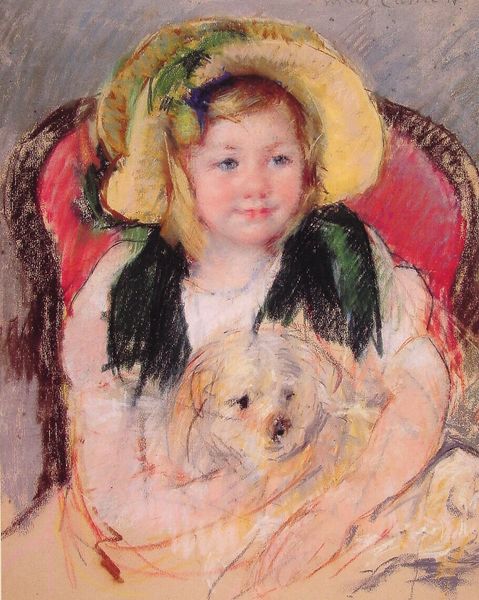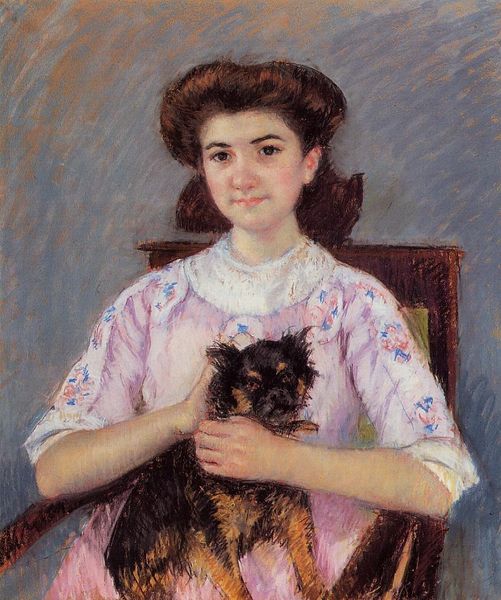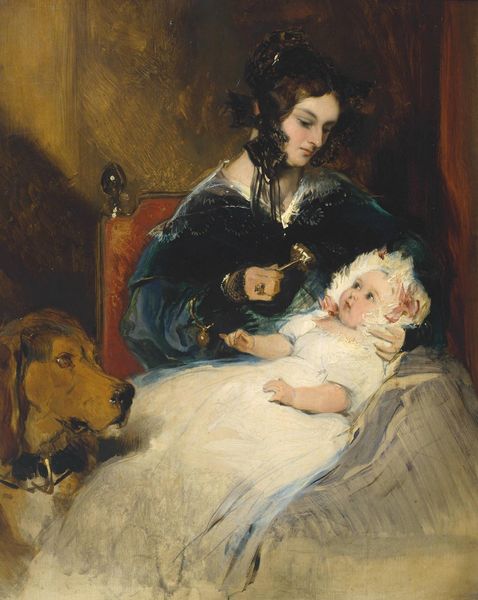
Copyright: Public domain
Editor: This is Giovanni Boldini's "The Actress Rejane and her Dog," painted in 1885. It’s an oil painting of a woman lovingly embracing her fluffy white dog. What strikes me most is the tenderness of the scene. What do you see in this piece from a historical perspective? Curator: This portrait is more than just a charming depiction of a woman and her pet. It’s a reflection of the rising celebrity culture in the late 19th century and the burgeoning power of actresses like Rejane. Consider the social role of portraiture at this time; it's less about simply recording likeness, and more about constructing a public persona. Editor: So, the painting is like publicity? Curator: In a way, yes. But publicity with a certain societal gloss. Boldini was very skilled at capturing the fashionable elite. The quick brushstrokes, the elegant pose - all these details are contributing to the image of Rejane as a modern woman of sophistication and taste. Do you think a photograph could have captured this kind of "status" at the time? Editor: I suppose a painting adds an aspirational layer that photography maybe hadn’t achieved yet? The painting isn't just documenting her existence; it is constructing an idea of who she is. Curator: Exactly. And the dog too, a pampered lapdog, functions as a symbol of wealth and leisure, part of that constructed identity. Look at how much care is given to representing its fur compared to, say, the botanical elements in the upper-left corner. It emphasizes the social status. Editor: I see that now. I had just assumed it was a cute pet portrait, but there's a whole story about status and celebrity woven into it. Curator: Precisely! That interplay between the personal and the social, the private affection and the public image, is what makes this painting so interesting. These images acted as social currency, influencing perception and shaping identities within a changing social landscape.
Comments
No comments
Be the first to comment and join the conversation on the ultimate creative platform.
